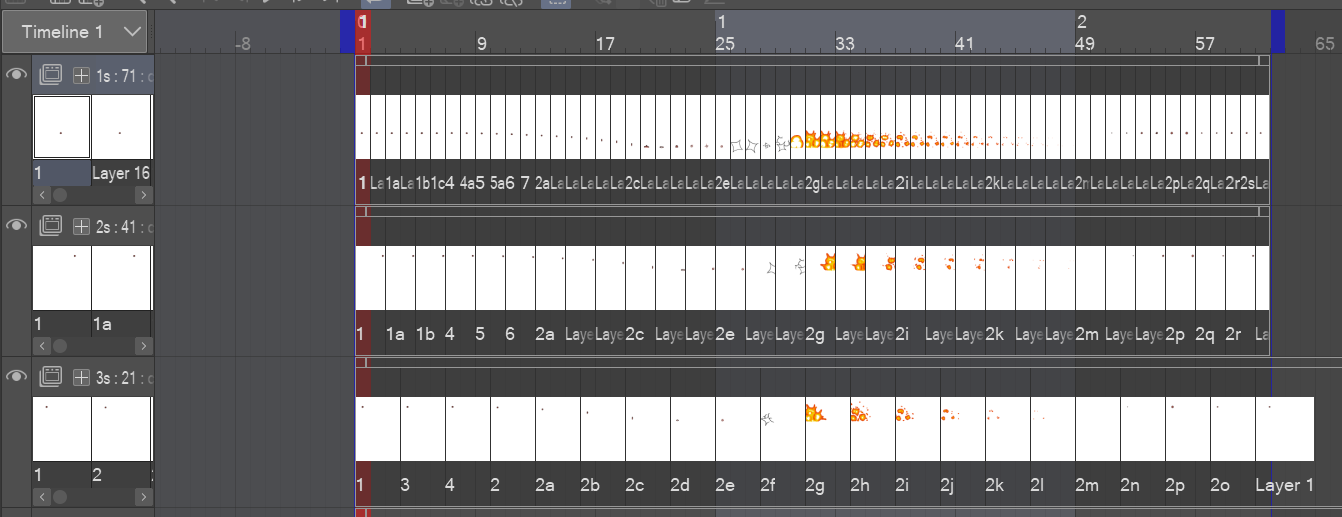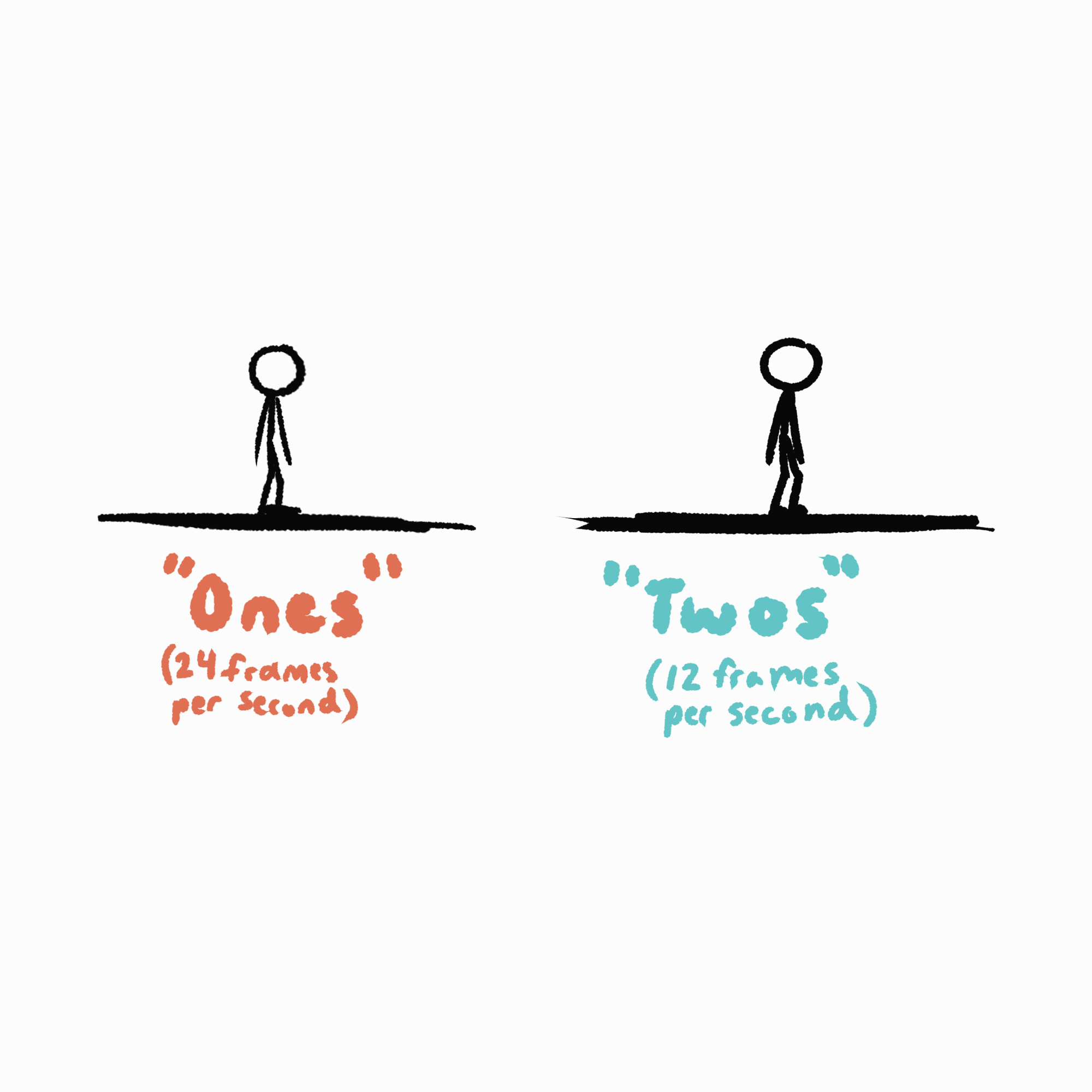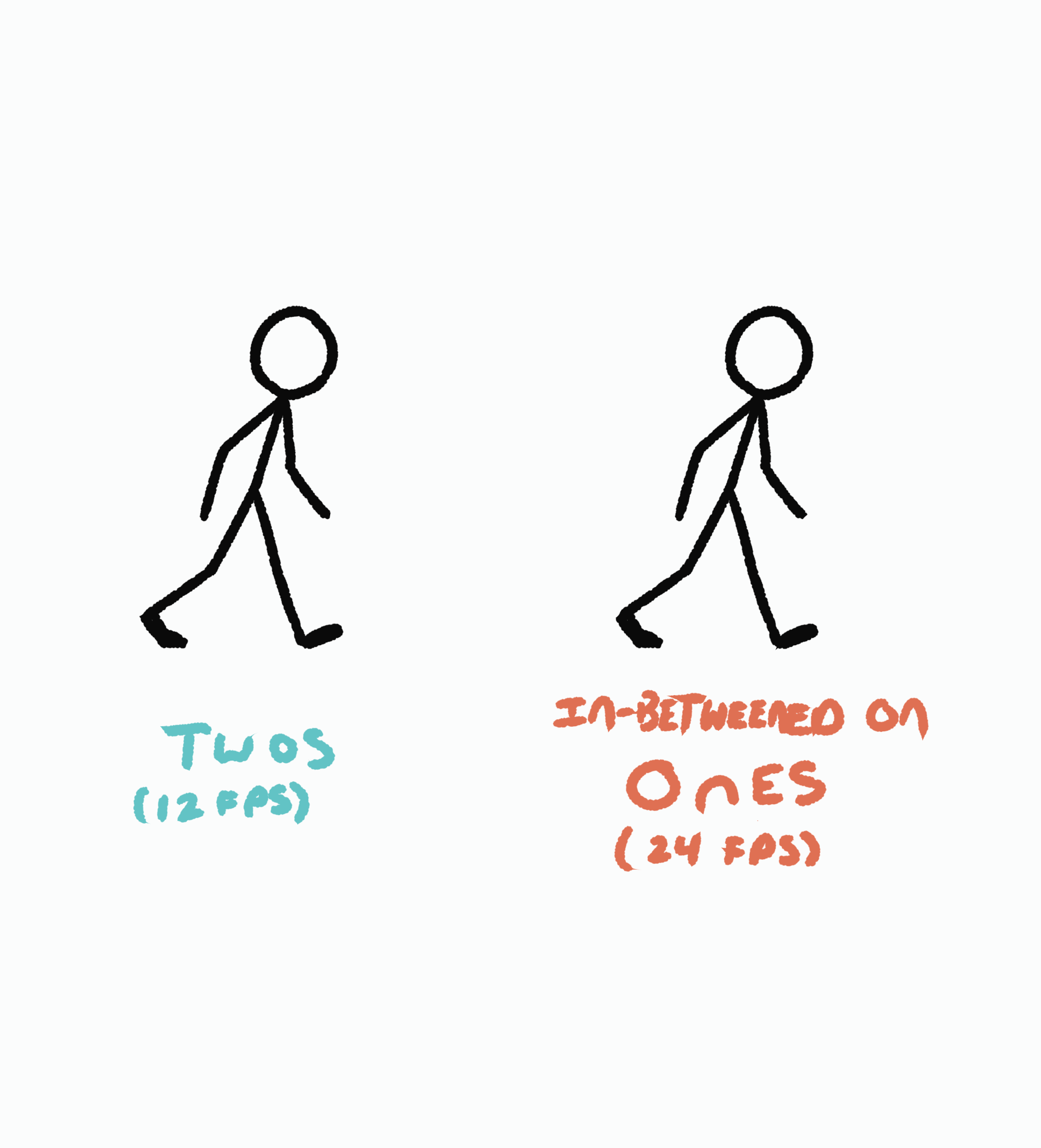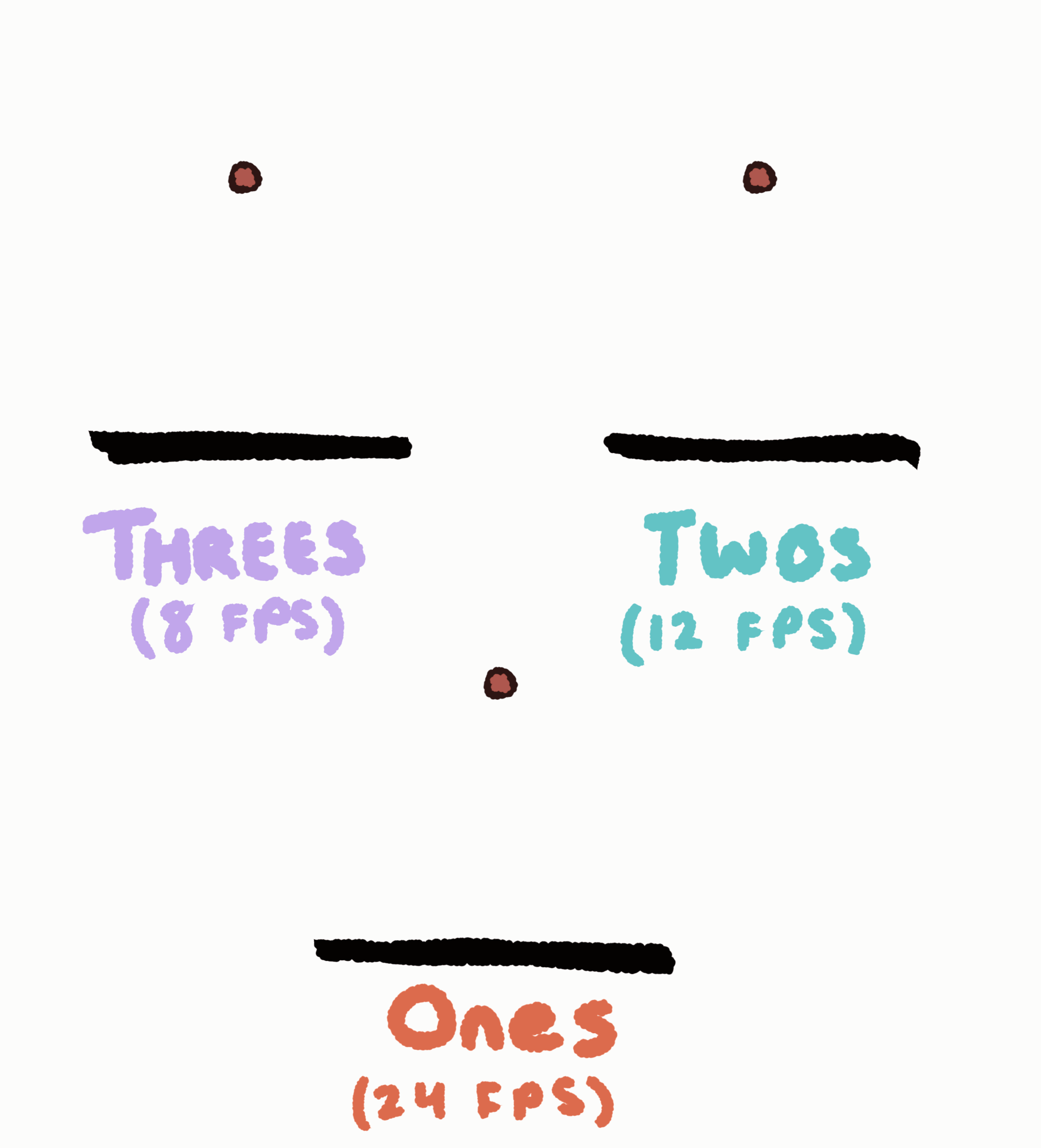Framerate Study
A study and discussion of varying framerates, interpolating frames, and how these choices are factored into when creating movement, timing, and impact.


A study and discussion of varying framerates, interpolating frames, and how these choices are factored into when creating movement, timing, and impact.

Figure 1, highlighting a stick figure jumping, is shown animated on both "ones" and "twos". For those who do not know this terminology, animating on "ones" is typically 24 frames per second animation. You draw a new frame every "one" frame. It can be inferred from there that animating on "twos" means that you make a new frame every two frames within the 24 frames per second.
In this instance, I animated the jump on ones, but then cut frames for it to be animated on twos. This made the animation on twos feel a little oddly timed and some smear frames to be held a little too long, but overall the feeling was still there in the impact of the leap and landing of the jump.

Figure 2, highlighting a stick figure walking, is once again showcased on both twos and ones. However, this time, I animated the walk cycle on twos and interpolated frames on ones.
This is where stuff starts getting messy. The timings and impacts were created with fewer frames in mind, making the animation interpolated on "ones" feel less rigid, and most noticeably less intentionally placed; less certain. The arms seem to be moving just a little too much, as well as some random extra bends in the knees in the legs. Although it may still be a little more slimy, interestingly enough this specific animation and motion is still very readable with the interpolated frames.

Figure 3 depicts three explosion animations all animated at different frame rates. From the top left to bottom right, they are animated on threes, twos, and ones.
This investigation of animation was by far my favorite to create and explore. I initially animated the explosion timed on threes, followed by twos, and then I once again interpolated frames on ones for the frames that I had made on twos. I reused frames from the explosion on threes to line up timing on some of the animation for the twos animation, and that went relatively smoothly. However, this is where the frame-by-frame interpolation shows how mucky it made my animation, as the animation done on ones feels needlessly noisy and less readable when placed right next to the animation when done on threes and twos.
I also find the difference between threes and twos to be quite interesting, as the threes animation feels like the explosion is much more sudden and forceful, while the explosive in particular when animated on twos feels very real and physically believable as a somewhat bouncy ball. In the threes, that bounce is not even noticeably present. I also personally prefer the explosive debris of the threes animation when compared to the animation on twos.
Especially when discussing and reflecting on the final explosion study, I didn't come out of the study with a particular frame rate highlighted as the "best" framerate. Different framerates are very useful in various settings, and as I continue to produce animations, I will explore the different use cases of frame rates. I'm excited to experiment with differing framerates when creating specific actions and motions, and testing the waters to see how everything feels!
One thing I did not get to touch upon when creating this study was VARIABLE framerate. This is an extremely powerful tool that I plan to investigate and explore in the future, as I feel that my conclusions and findings from this study will lead me nicely to discovering the inspiring possibilities of variable framerate when creating animations in the future.
Thank you for taking the time to follow along with me on this exploration!